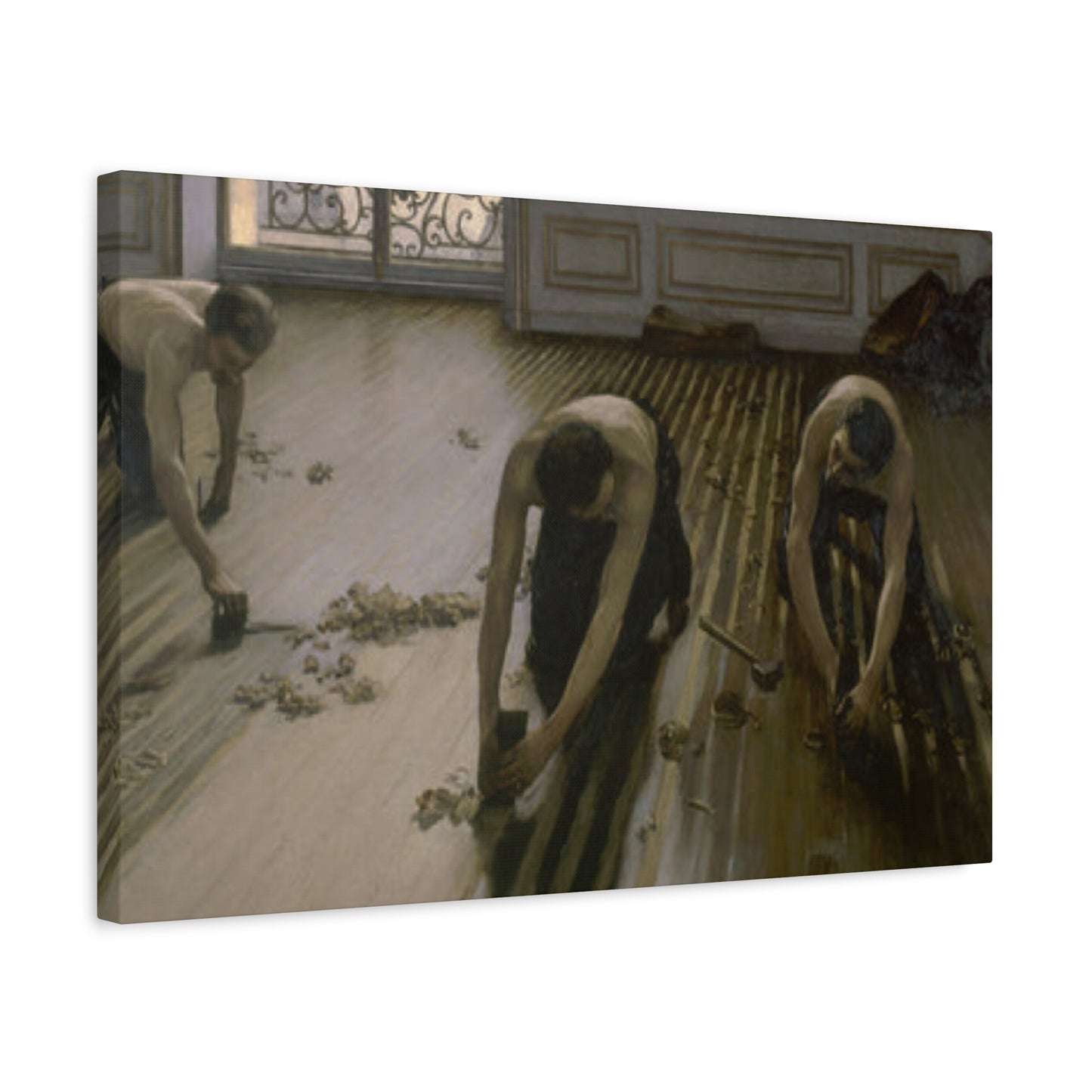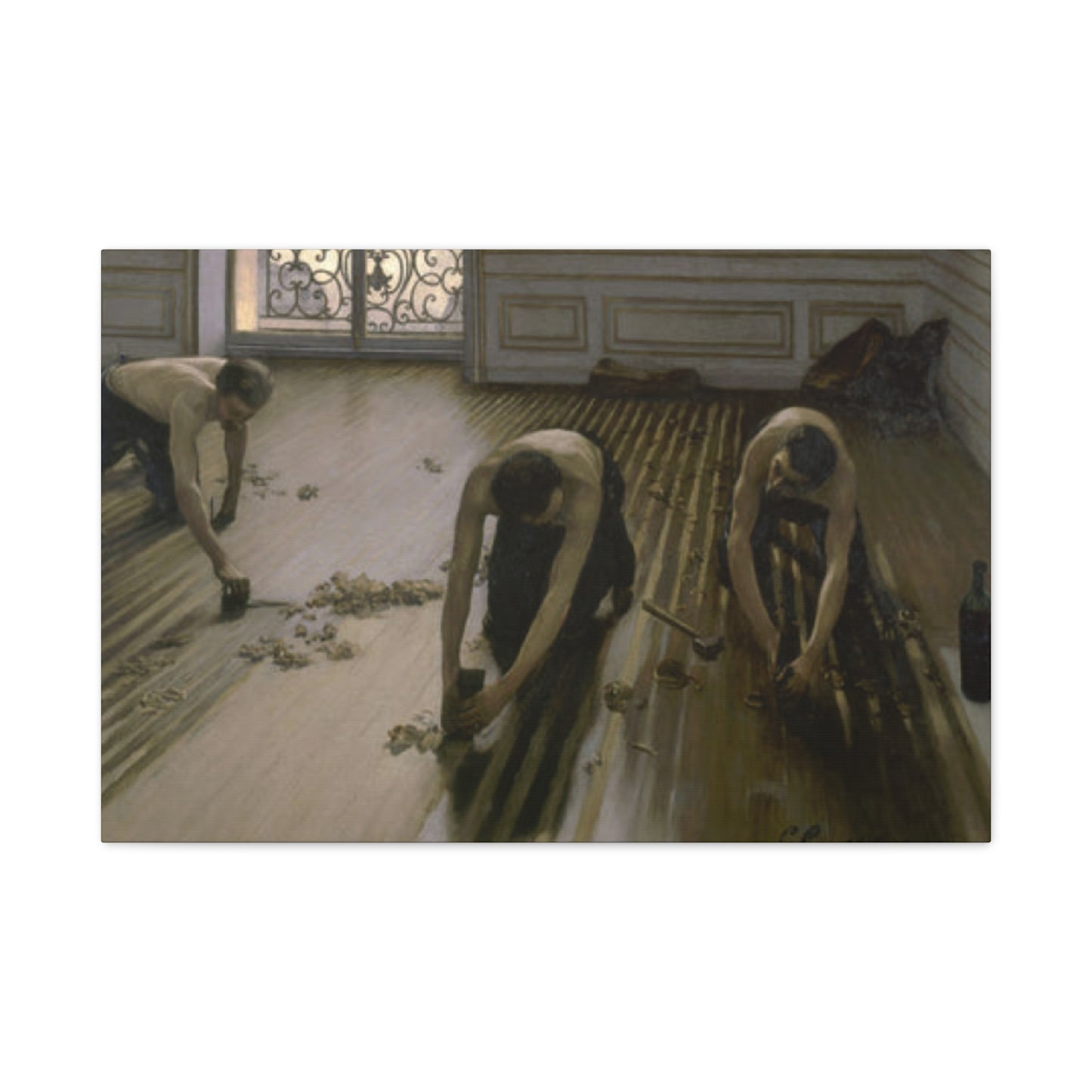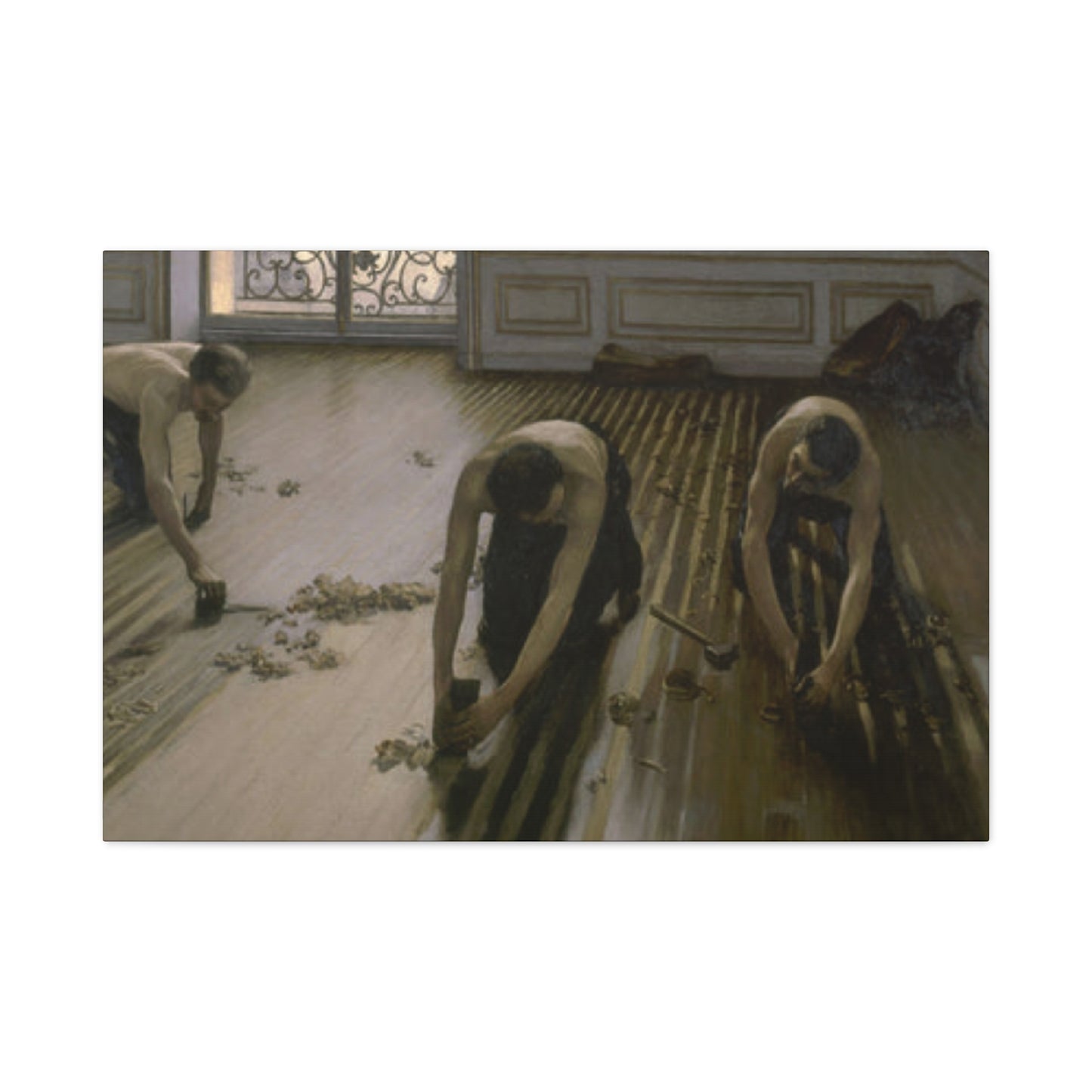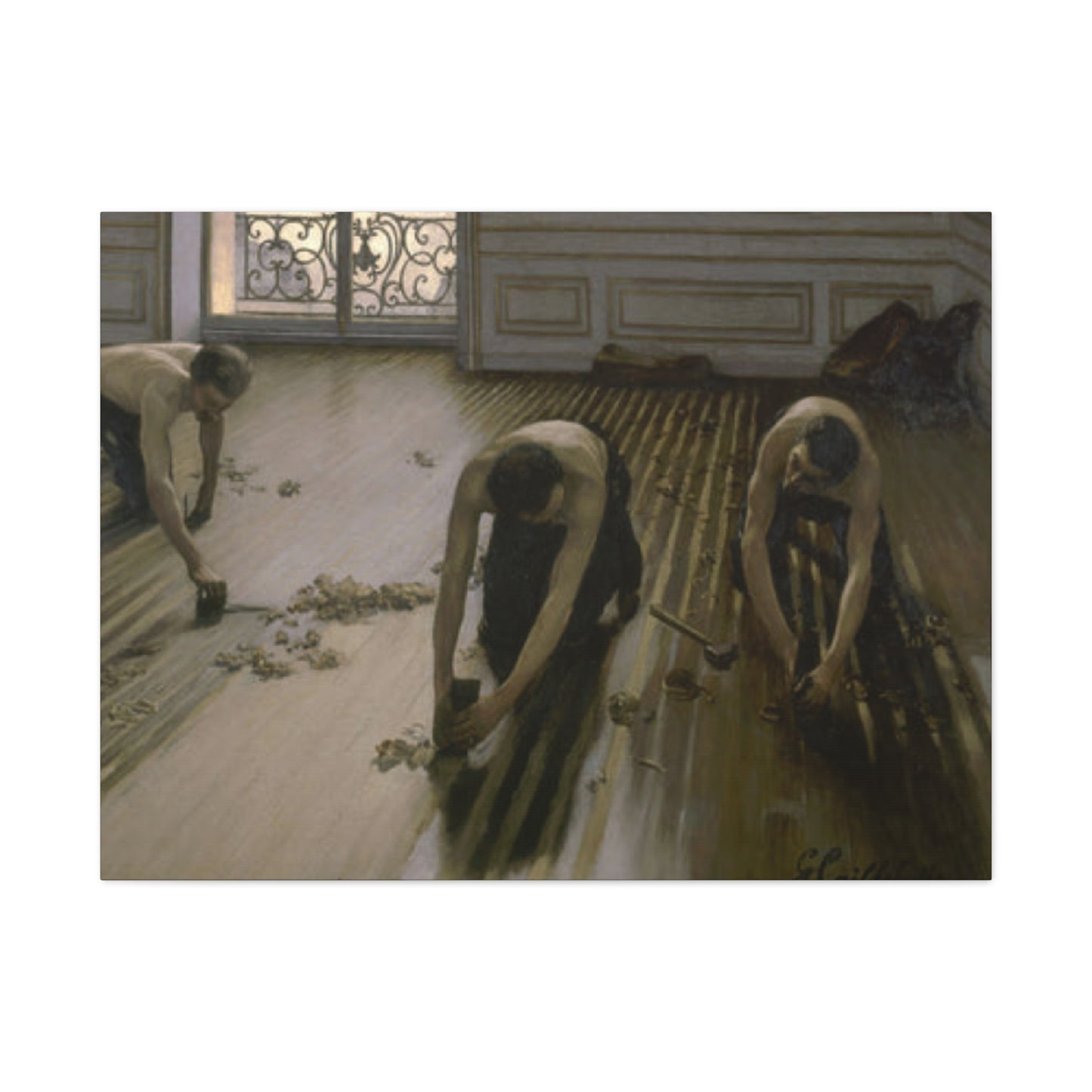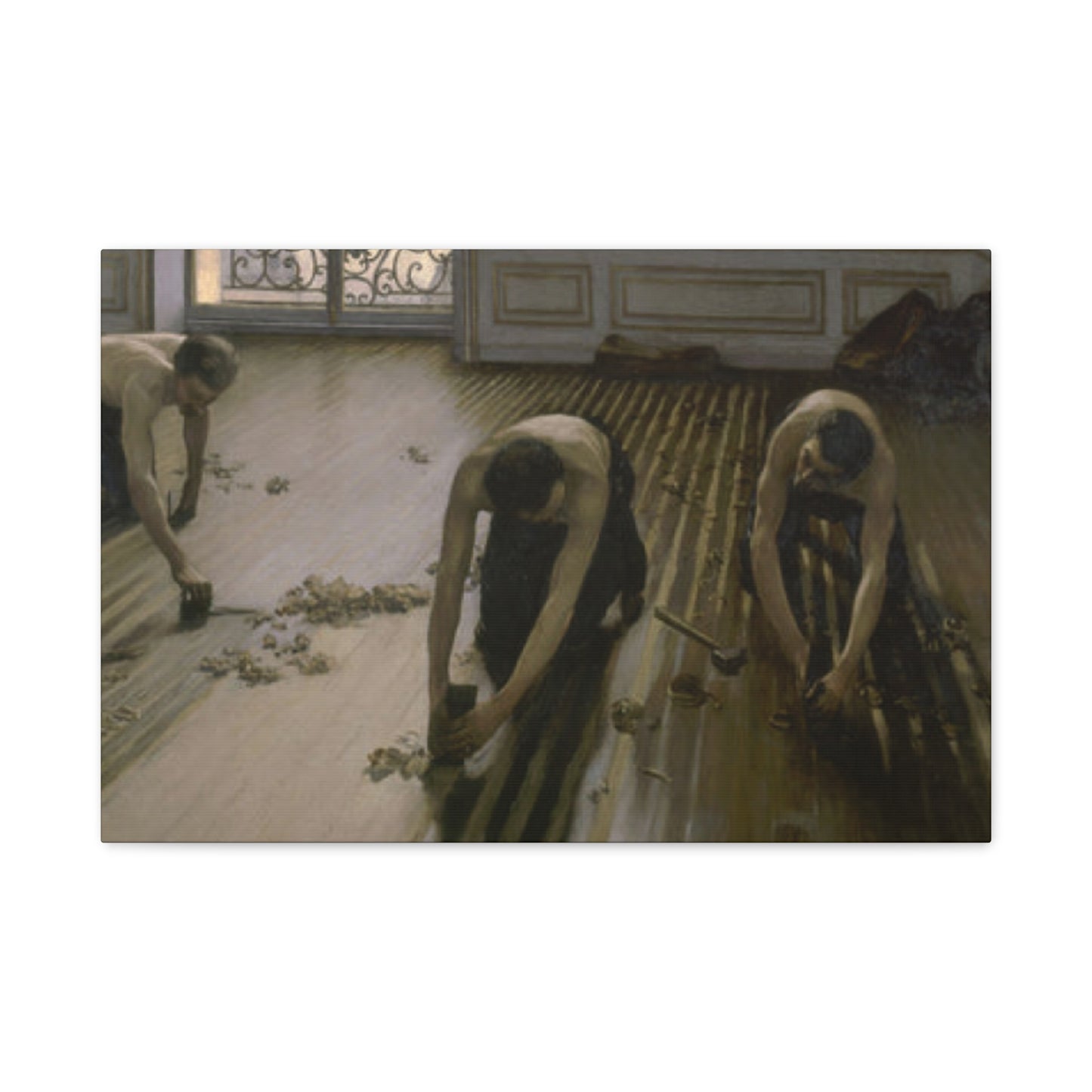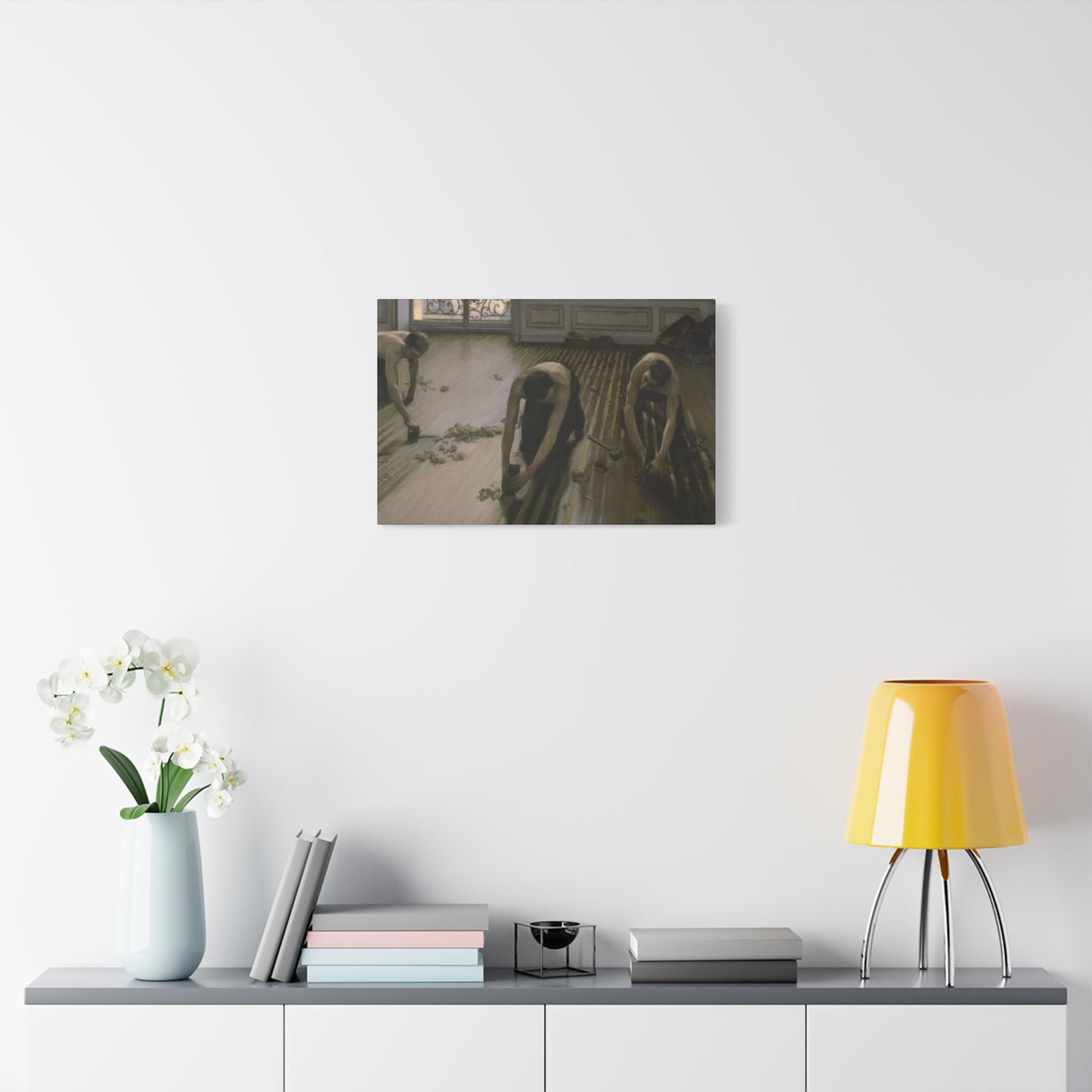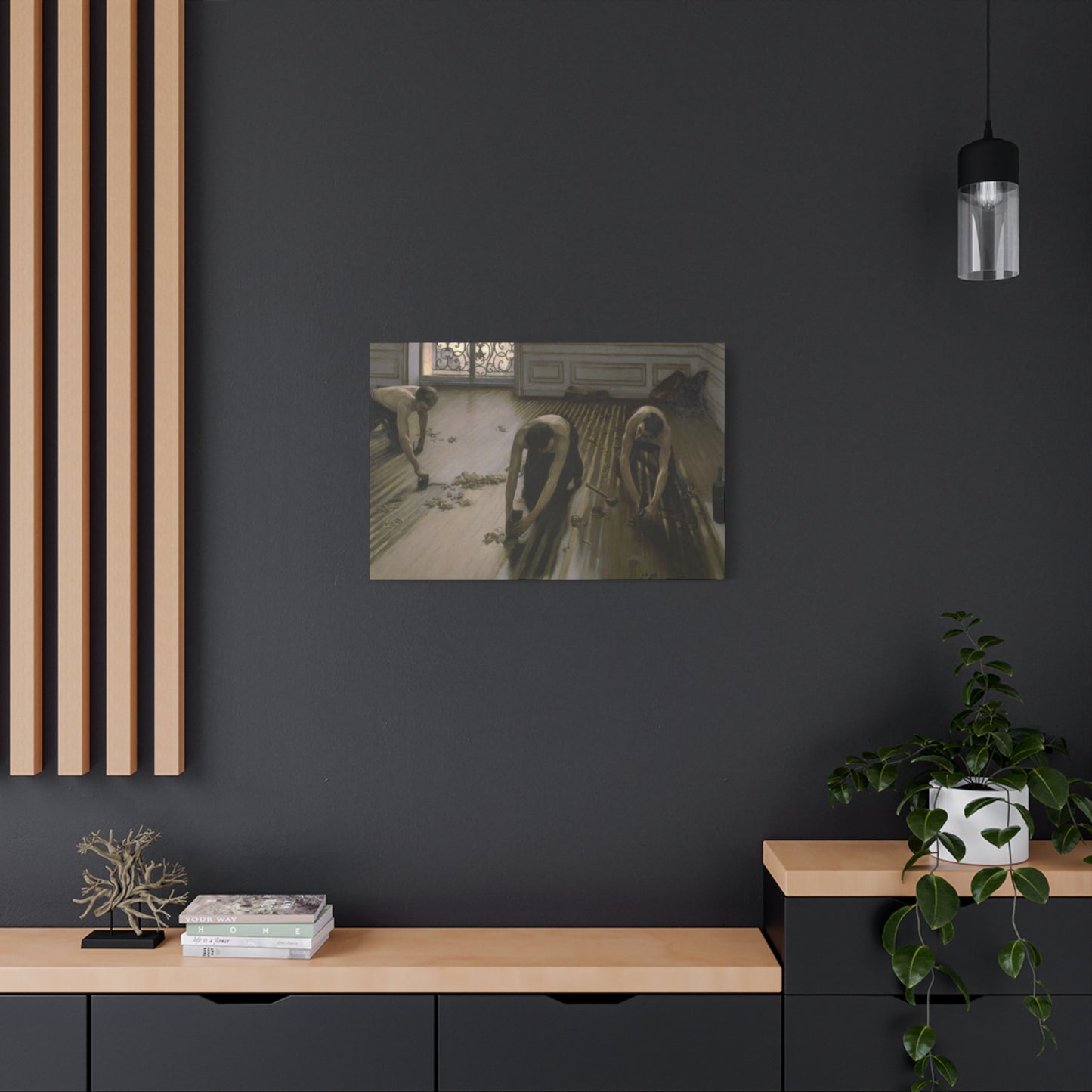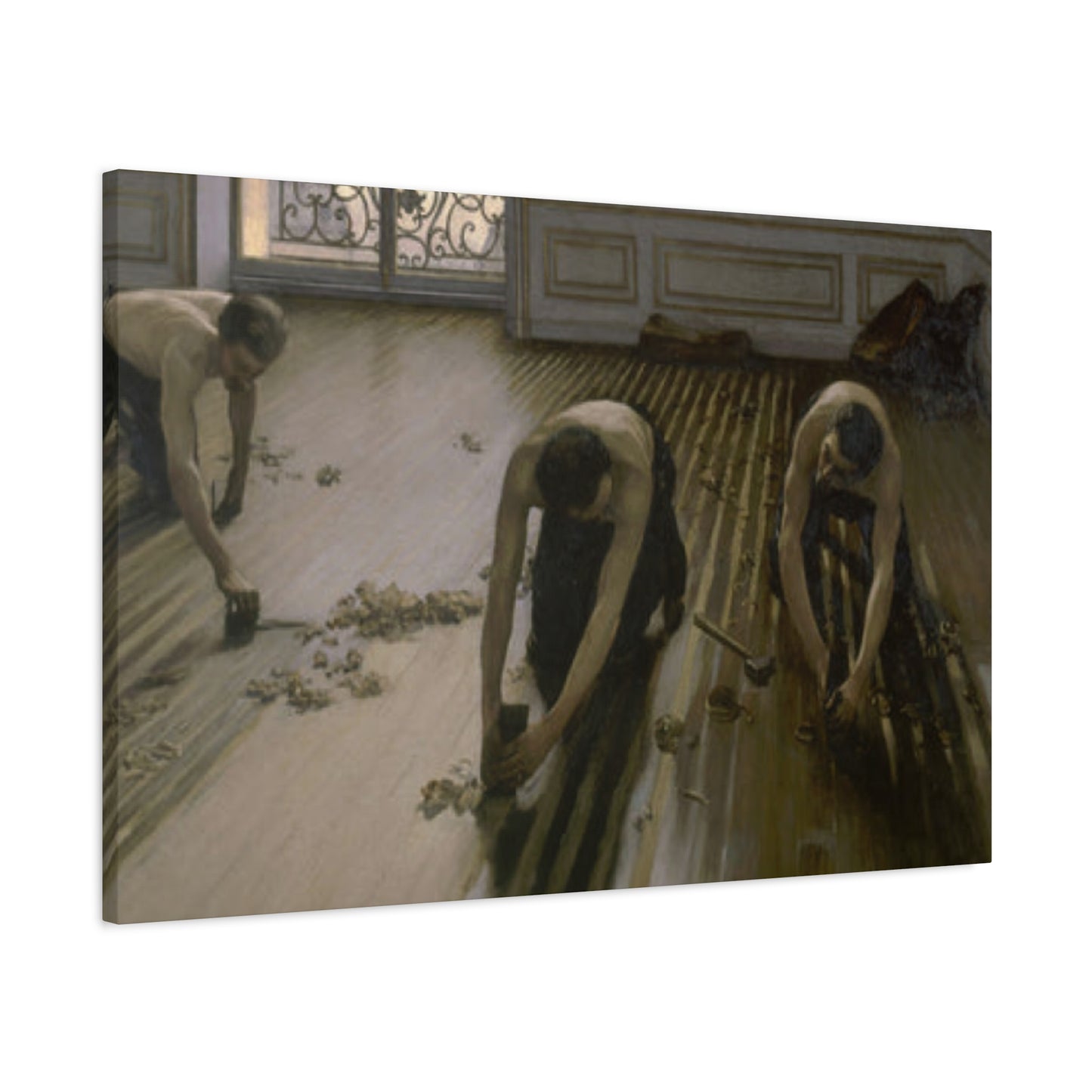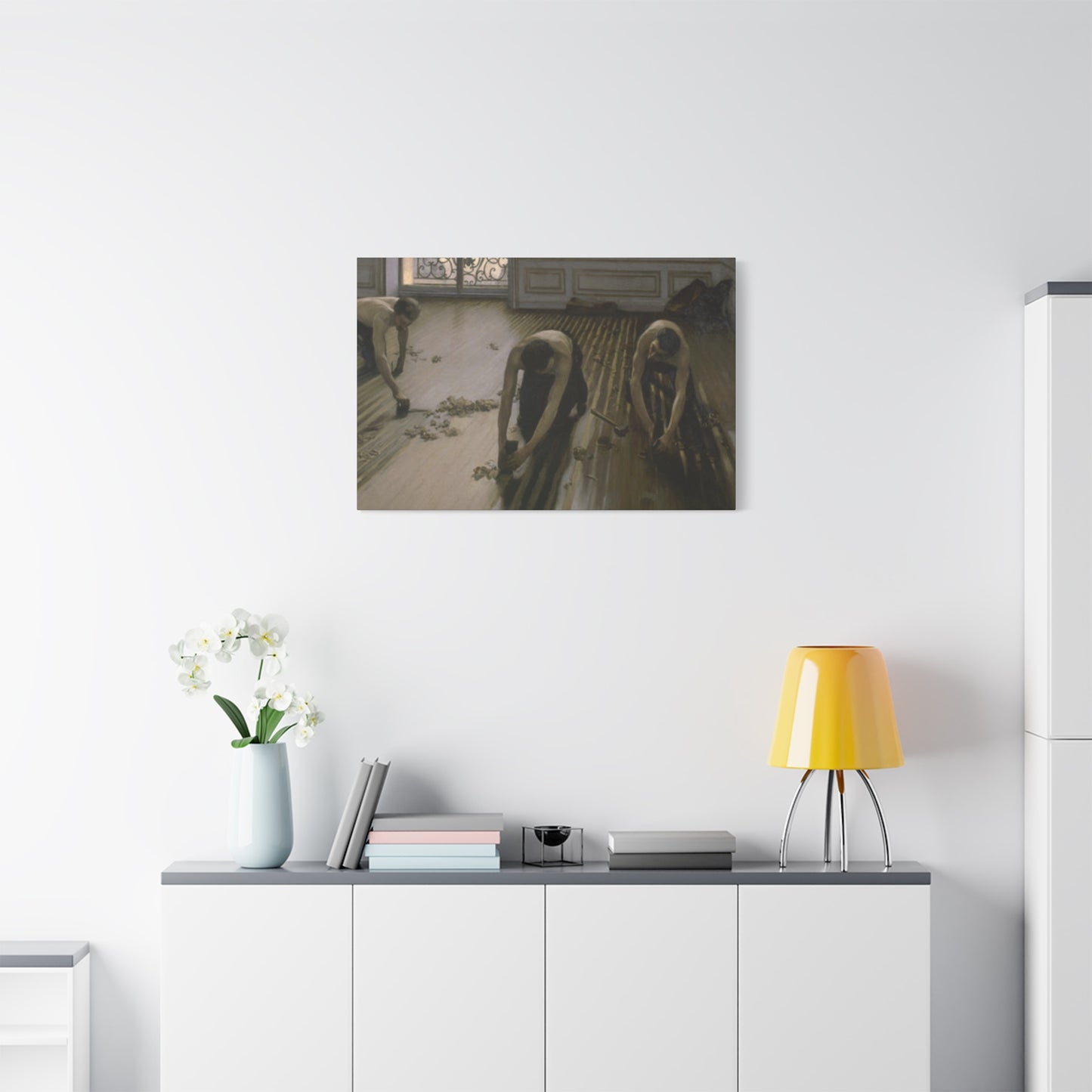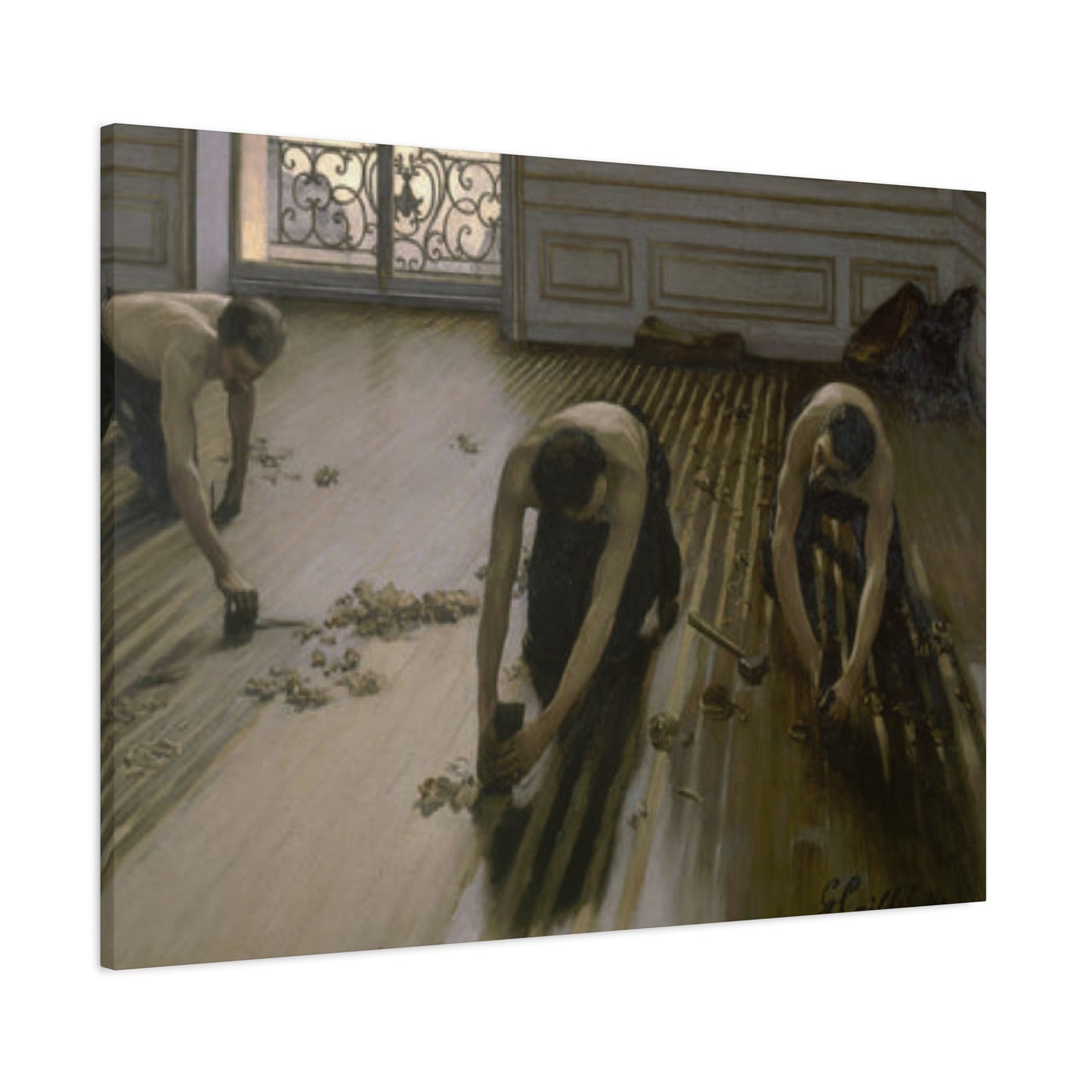Gustav's Men Working Wall Art: Masterful Depictions of Labor and Industry
The artistic legacy of Gustav's labor-focused paintings represents one of the most compelling chapters in the documentation of human endeavor through visual art. These powerful depictions of men engaged in various forms of work have transcended their original context to become iconic representations of industrial-era humanity, combining artistic excellence with profound social commentary. Gustav's ability to capture the essence of human labor through his masterful brushwork and keen observational skills has created a body of work that continues to resonate with contemporary audiences, offering both aesthetic pleasure and historical insight into the working conditions and social dynamics of his time.
Gustav's paintings featuring men at work serve as windows into the industrial world of the late 19th and early 20th centuries, providing viewers with intimate glimpses into the daily lives of laborers across various industries. These works demonstrate the artist's deep understanding of human anatomy, movement, and emotion, as he skillfully portrayed the physical demands and psychological aspects of manual labor. The paintings reveal Gustav's commitment to documenting the dignity of work while simultaneously highlighting the challenging conditions faced by working-class individuals during a period of rapid industrialization and social change.
Depicting Labor: Gustav's Men Working Paintings
Gustav's approach to depicting labor in his paintings reflects a profound understanding of the human condition and the transformative power of work in shaping individual identity and social structures. His men working paintings showcase a remarkable ability to capture the essence of physical exertion, the concentration required for skilled tasks, and the camaraderie that often develops among workers sharing common challenges. These artworks demonstrate Gustav's keen eye for detail, as he meticulously rendered the tools, machinery, and environments that formed the backdrop of industrial labor.
The artist's commitment to authenticity in his labor scenes is evident in his careful attention to the specific requirements of different types of work. Whether depicting miners emerging from underground shafts, factory workers tending to machinery, or construction workers building the infrastructure of modern cities, Gustav invested considerable time in studying the particular movements, postures, and techniques associated with each profession. This dedication to accuracy not only enhanced the realism of his paintings but also contributed to their value as historical documents of working-class life.
Gustav's men working paintings often feature groups of laborers collaborating on complex tasks, highlighting the importance of teamwork and collective effort in achieving common goals. These compositions reveal the artist's understanding of workplace dynamics and his ability to capture the subtle interactions between individuals working toward shared objectives. The paintings frequently show moments of intense concentration, physical strain, and mutual support, creating compelling narratives that speak to universal themes of human cooperation and perseverance.
The emotional depth present in Gustav's labor paintings extends beyond mere documentation of physical activity to explore the psychological aspects of work and its impact on individual identity. His subjects often display expressions of determination, pride, exhaustion, or contemplation, revealing the complex relationship between personal fulfillment and the demands of manual labor. These emotional layers add richness to the visual narrative and invite viewers to consider the broader implications of work in human experience.
The Power of Work in Gustav's Art
The concept of work as a powerful force in human society permeates Gustav's artistic vision, manifesting in paintings that celebrate the transformative nature of labor while acknowledging its inherent challenges and contradictions. His men working paintings demonstrate how physical effort can serve as both a means of survival and a source of personal dignity, revealing the complex relationship between individual agency and economic necessity. Gustav's artistic interpretation of work goes beyond simple observation to offer commentary on the role of labor in shaping character, building communities, and advancing civilization.
Gustav's paintings frequently emphasize the noble aspects of manual labor, presenting workers as heroic figures whose efforts contribute to the greater good of society. This perspective reflects the artist's belief in the inherent value of honest work and his desire to counter prevailing social attitudes that often diminished the status of working-class individuals. Through his masterful use of light, composition, and color, Gustav elevated ordinary laborers to the level of classical heroes, suggesting that their contributions were worthy of artistic celebration and public recognition.
The power dynamics present in Gustav's workplace scenes reveal his awareness of the social hierarchies that characterized industrial labor during his era. His paintings often include supervisors, foremen, or other authority figures, creating compositions that explore the relationships between different levels of the working hierarchy. These elements add complexity to the narratives and provide insight into the social structures that governed workplace interactions during the industrial period.
Gustav's artistic treatment of work also encompasses the technological aspects of labor, showing how human skill and ingenuity interact with mechanical devices and industrial processes. His paintings frequently feature detailed renderings of tools, machinery, and equipment, demonstrating his fascination with the intersection of human capability and technological innovation. This focus on the material culture of work provides valuable documentation of the technological landscape of his time while highlighting the ongoing relationship between human workers and the tools they employ.
The temporal dimensions of work in Gustav's paintings reflect his understanding of labor as both a daily routine and a life-defining activity. Many of his compositions capture specific moments in longer work processes, suggesting the cyclical nature of industrial labor while highlighting the skill and experience required to perform complex tasks efficiently. These temporal elements contribute to the narrative richness of the paintings and invite viewers to consider the broader context of the depicted activities.
How Gustav Portrays Men at Work
Gustav's distinctive approach to portraying men at work combines technical mastery with psychological insight, resulting in paintings that capture both the physical realities of labor and the emotional experiences of individual workers. His method involves careful observation of body language, facial expressions, and group dynamics, allowing him to create compositions that feel authentic and emotionally resonant. The artist's ability to convey the weight of tools, the strain of physical effort, and the concentration required for precise tasks demonstrates his deep understanding of the mechanics of human movement and the demands of various types of work.
The compositional strategies employed by Gustav in his men working paintings reveal his sophisticated understanding of visual storytelling and his ability to guide viewer attention through carefully orchestrated arrangements of figures, objects, and architectural elements. His use of diagonal lines created by tools, machinery, or structural elements helps to establish dynamic tension within the compositions while suggesting the energy and movement inherent in work activities. These compositional choices contribute to the overall impact of the paintings and enhance their narrative effectiveness.
Gustav's treatment of lighting in his labor scenes serves multiple functions, from enhancing the three-dimensional quality of figures and objects to creating mood and atmosphere that support the thematic content of the paintings. His skillful manipulation of light sources, whether natural daylight filtering through windows or artificial illumination from industrial fixtures, adds drama to the scenes while highlighting important details and creating visual hierarchy. The interplay between light and shadow in these works often serves symbolic purposes, suggesting themes of hope, struggle, or transformation.
The artist's attention to costume and clothing details in his men working paintings provides valuable documentation of period-specific work attire while contributing to the authenticity and historical accuracy of the scenes. Gustav's careful rendering of worn fabrics, protective gear, and specialized clothing reveals his commitment to truthful representation and his appreciation for the practical aspects of working-class life. These details enhance the overall credibility of the paintings while adding visual interest through varied textures and patterns.
Gustav's portrayal of racial and ethnic diversity in his workplace scenes reflects the multicultural nature of industrial labor during his era and demonstrates his commitment to representing the full spectrum of working-class experience. His paintings often include workers from different backgrounds collaborating on common tasks, highlighting themes of unity and shared purpose that transcend cultural differences. This inclusive approach adds social relevance to the works while providing insight into the demographic composition of the industrial workforce.
The Role of Men Working in Gustav's Wall Art
The significance of men working as a central theme in Gustav's wall art extends beyond mere subject matter to encompass broader artistic and social purposes that reflect the artist's vision of art's role in society. These paintings serve as powerful statements about the dignity of labor and the importance of recognizing the contributions of working-class individuals to the development of modern civilization. When displayed as wall art, Gustav's men working paintings create focal points that invite contemplation and discussion about work, class, and social progress.
Gustav's men working paintings function as historical documents that preserve visual records of specific industries, work practices, and social conditions that might otherwise be lost to time. The detailed depictions of tools, techniques, and workplace environments provide valuable information for historians, sociologists, and other researchers interested in understanding the material culture of industrial-era labor. This documentary function adds scholarly value to the aesthetic appeal of the works, making them suitable for educational settings as well as traditional art display contexts.
The emotional impact of Gustav's men working wall art derives from the artist's ability to humanize industrial labor by focusing on individual personalities and relationships within workplace settings. Rather than presenting workers as anonymous figures in industrial machinery, Gustav's paintings reveal the human faces behind economic production, creating empathetic connections between viewers and the depicted subjects. This humanizing approach challenges viewers to consider the personal stories and experiences of working-class individuals while appreciating the artistic merit of the paintings themselves.
The scale and format of Gustav's men working paintings make them particularly effective as wall art, with compositions designed to command attention and create immersive viewing experiences. The artist's use of bold forms, strong contrasts, and dynamic arrangements ensures that these works maintain visual impact even when displayed in large rooms or public venues. The paintings' ability to function effectively at various scales makes them versatile choices for different types of architectural settings and display contexts.
Gustav's men working wall art serves as a bridge between fine art traditions and social documentation, combining aesthetic sophistication with accessible subject matter that speaks to universal human experiences. This dual function allows the paintings to appeal to diverse audiences while maintaining their artistic integrity and cultural significance. The works demonstrate how art can serve both decorative and educational purposes without compromising either function.
Exploring Industrial Themes in Gustav's Paintings
Gustav's exploration of industrial themes in his paintings reveals a fascination with the technological and social transformations that characterized his historical period, resulting in artworks that capture the excitement, challenges, and contradictions of rapid industrialization. His men working paintings serve as visual chronicles of the shift from agricultural to industrial economies, documenting the emergence of new forms of labor, new social relationships, and new urban environments. These works provide insight into the artist's perspective on modernization and his assessment of its impact on human experience.
The technological elements present in Gustav's industrial paintings demonstrate his interest in machinery, tools, and manufacturing processes as subjects worthy of artistic attention. His detailed renderings of steam engines, factory equipment, and construction machinery reveal both technical accuracy and aesthetic appreciation for the forms and functions of industrial technology. These elements contribute to the historical value of the paintings while adding visual complexity and interest to the compositions.
Gustav's treatment of industrial environments in his men working paintings encompasses both indoor and outdoor settings, from factory floors and mining tunnels to construction sites and transportation hubs. His ability to capture the distinctive characteristics of different industrial locations provides viewers with comprehensive exposure to the variety of work environments that characterized the industrial era. These environmental details contribute to the authenticity of the scenes while creating atmospheric effects that enhance the overall impact of the paintings.
The social themes embedded in Gustav's industrial paintings address issues of class, progress, and human adaptation to technological change. His works often explore the tensions between traditional ways of life and modern industrial practices, highlighting both the opportunities and challenges created by economic transformation. These thematic elements add intellectual depth to the visual appeal of the paintings and invite viewers to consider broader questions about the relationship between technology and society.
Gustav's industrial paintings frequently feature symbolic elements that suggest his interpretation of the broader significance of industrialization for human civilization. Steam, smoke, and mechanical motion serve as visual metaphors for progress, energy, and transformation, while the physical strain evident in his depictions of workers suggests the human costs associated with economic development. These symbolic dimensions add layers of meaning to the works that extend beyond their immediate visual impact.
The Emotion Behind Men Working in Gustav's Art
Gustav's masterful portrayal of emotion in his men working paintings demonstrates his understanding that labor involves not only physical effort but also complex psychological and emotional experiences that vary according to individual circumstances, workplace conditions, and personal relationships. His ability to capture subtle facial expressions, body language, and gestural details allows viewers to perceive the inner lives of his subjects, creating empathetic connections that transcend the historical and cultural distances that separate contemporary audiences from the depicted workers.
The range of emotions present in Gustav's labor paintings reflects the diversity of human responses to work, from pride and satisfaction in skilled craftsmanship to exhaustion and frustration with difficult conditions. His paintings reveal moments of camaraderie among workers, tension between supervisors and subordinates, and individual contemplation during brief respites from demanding tasks. This emotional variety adds psychological realism to the works while highlighting the human dimensions of industrial labor.
Gustav's technique for conveying emotion through visual means demonstrates his sophisticated understanding of how facial expressions, posture, and gesture communicate psychological states. His ability to suggest weariness through slightly slumped shoulders, determination through clenched jaws, or concern through furrowed brows adds narrative richness to his compositions without relying on explicit symbolic devices. These subtle emotional cues invite viewers to engage imaginatively with the depicted scenes and consider the personal experiences of individual workers.
The collective emotions present in Gustav's group compositions reveal his awareness of how shared experiences create bonds among workers facing common challenges. His paintings often capture moments of mutual support, collaborative problem-solving, or collective celebration, highlighting the social dimensions of workplace experience. These group dynamics add complexity to the emotional content of the works while suggesting broader themes about community and solidarity.
Gustav's emotional treatment of his subjects reflects his empathetic approach to working-class life and his commitment to presenting laborers as fully realized human beings rather than mere representatives of social or economic categories. His paintings avoid both romanticization and condescension, instead offering respectful portrayals that acknowledge both the dignity and the difficulties associated with manual labor. This balanced emotional approach contributes to the lasting appeal and relevance of his men working paintings.
Gustav's Technique for Capturing Movement in Labor Scenes
Gustav's technical approach to depicting movement in his labor scenes demonstrates exceptional skill in translating dynamic physical activity into static visual compositions, utilizing sophisticated understanding of anatomy, gesture, and composition to create convincing impressions of bodies in motion. His ability to capture the specific movements associated with different types of work reveals both careful observation and artistic innovation, resulting in paintings that convey the energy and rhythm of industrial labor through purely visual means.
The anatomical accuracy present in Gustav's depictions of working figures reflects his thorough study of human musculature and his understanding of how physical effort affects posture, balance, and coordination. His paintings reveal the strain placed on different muscle groups during various work activities, from the back muscles engaged in lifting heavy objects to the arm and hand muscles required for precise tool manipulation. This anatomical knowledge contributes to the believability of his movement depictions while adding educational value to the artistic content.
Gustav's compositional strategies for suggesting movement include the strategic placement of figures at different stages of repetitive work cycles, creating visual sequences that imply temporal progression within single paintings. His use of overlapping forms, diagonal lines, and directional gestures helps to establish visual flow that guides viewer attention through complex multi-figure compositions. These compositional techniques enhance the sense of activity and energy that characterizes his labor scenes.
The artist's handling of drapery and clothing in his movement studies reveals his understanding of how fabric responds to physical activity, adding another layer of visual information that supports the impression of bodies in motion. His depiction of work clothes responding to sudden movements, wind, or physical strain contributes to the overall dynamism of his compositions while providing additional evidence of his careful observation of real-world conditions.
Gustav's use of brushwork techniques to suggest movement demonstrates his technical versatility and his ability to adapt his painting methods to support thematic content. His employment of directional brushstrokes to follow the lines of motion, varied paint application to suggest different textures and surfaces, and strategic use of impasto effects to emphasize key areas of activity all contribute to the kinetic quality of his labor paintings.
Men Working: A Symbol of Strength in Gustav's Paintings
The symbolic representation of strength in Gustav's men working paintings encompasses both physical power and moral fortitude, reflecting the artist's view of labor as a fundamental expression of human capability and determination. His depictions of muscular workers engaged in demanding tasks serve as visual metaphors for broader themes of perseverance, resilience, and the transformative power of human effort. These symbolic dimensions add depth to the paintings while connecting specific workplace scenes to universal human experiences and values.
Gustav's visual vocabulary for representing physical strength includes careful attention to muscular definition, dynamic poses that emphasize power and control, and compositional arrangements that highlight the relationship between human capability and challenging tasks. His paintings often show workers successfully managing heavy loads, operating complex machinery, or performing tasks that require both strength and skill, suggesting themes of mastery and competence that extend beyond mere physical ability.
The moral dimensions of strength in Gustav's labor paintings reflect his belief in the character-building aspects of honest work and the dignity that comes from contributing to society through productive effort. His depictions of workers facing difficult conditions with determination and maintaining professional standards despite challenging circumstances suggest inner strength that complements and enhances physical capability. These moral themes add philosophical depth to the visual content while connecting individual work experiences to broader social values.
Gustav's treatment of collective strength in his group compositions reveals his understanding of how individual capabilities can be amplified through cooperation and mutual support. His paintings often show workers combining their efforts to accomplish tasks that would be impossible for individuals working alone, highlighting themes of community strength and shared purpose. These collective dimensions add social relevance to the symbolic content while suggesting models for effective collaboration.
The symbolic contrast between human strength and technological power in Gustav's paintings reflects his awareness of the changing relationship between workers and machines during the industrial era. His works often juxtapose human figures with mechanical devices, creating visual dialogues about the relative merits of human versatility and mechanical efficiency. These symbolic elements add complexity to the thematic content while addressing contemporary concerns about technological change and its impact on working-class life.
Top Gustav Paintings of Men at Work for Wall Décor
Gustav's most celebrated paintings featuring men at work offer exceptional choices for wall décor, combining artistic excellence with compelling subject matter that creates engaging focal points in residential and commercial settings. These masterworks demonstrate the artist's ability to transform ordinary workplace scenes into extraordinary visual experiences that continue to resonate with contemporary audiences. The selection of top paintings reflects both critical acclaim and popular appeal, ensuring that these works function effectively as both art objects and decorative elements.
The painting "Forge Workers at Dawn" stands as one of Gustav's most powerful depictions of industrial labor, featuring blacksmiths working around a glowing forge in the early morning hours. The dramatic lighting effects created by the forge fire illuminate the muscular figures of the workers while casting dynamic shadows throughout the composition. The painting's warm color palette and energetic brushwork create an atmosphere of purposeful activity that makes it an ideal centerpiece for dining rooms or studies where its themes of craftsmanship and dedication can inspire viewers.
"Construction Crew Building the City" represents Gustav's fascination with urban development and the role of skilled laborers in creating modern infrastructure. The painting depicts construction workers at various elevations of a building site, creating a complex vertical composition that draws viewers into the scene through multiple points of visual interest. The work's architectural elements and urban setting make it particularly suitable for modern office environments or contemporary homes where its themes of progress and construction resonate with current experiences.
Gustav's "Mine Workers Emerging" captures the moment when underground laborers emerge from tunnel systems into daylight, creating a powerful metaphor for perseverance and hope. The contrast between the darkness of the mine entrance and the brightness of the surface world adds dramatic impact to the composition while highlighting themes of endurance and reward. This painting works exceptionally well in hallways or entryways where its themes of emergence and transition create appropriate atmospheric effects.
"Factory Floor Assembly" showcases Gustav's ability to find beauty in industrial settings while documenting the precision and coordination required for manufacturing processes. The painting's horizontal format and rhythmic arrangement of figures create visual harmony that complements modern furniture arrangements while its industrial theme adds contemporary relevance to traditional artistic techniques. This work functions effectively in living rooms or professional offices where its themes of teamwork and efficiency support productive environments.
"Dock Workers Loading Ships" demonstrates Gustav's skill in capturing the energy and complexity of maritime commerce while celebrating the physical strength and coordination of waterfront laborers. The painting's dynamic composition and nautical elements create visual interest that works well in coastal homes or maritime-themed settings, while its themes of trade and transportation connect to contemporary global commerce experiences.
The Storytelling in Gustav's Men Working Art
Gustav's approach to storytelling through his men working art demonstrates sophisticated narrative techniques that transform simple workplace scenes into complex visual stories with multiple layers of meaning and emotional resonance. His ability to embed compelling narratives within single compositions reveals his understanding of how visual elements can suggest temporal sequences, character relationships, and thematic development without relying on textual explanation or external context.
The narrative structures present in Gustav's labor paintings often follow dramatic patterns that include exposition, conflict, and resolution elements distributed throughout the compositional arrangement. His paintings frequently establish setting and character through environmental details and figure positioning, introduce tension through challenging work situations or interpersonal dynamics, and suggest resolution through successful task completion or moments of satisfaction and rest. These narrative elements create engaging viewing experiences that reward careful observation and imaginative engagement.
Gustav's character development techniques in his men working paintings include the use of distinctive facial features, body language, and costume details to create individual personalities that viewers can recognize and follow across different works. His recurring character types include experienced mentors, eager apprentices, dedicated supervisors, and struggling newcomers, each contributing different perspectives to the overall narrative of industrial labor. These character elements add human interest to the technical aspects of work while creating opportunities for emotional connection between viewers and depicted subjects.
The temporal dimensions of storytelling in Gustav's paintings include suggestions of events that occurred before the depicted moment and implications of future developments based on current actions and situations. His compositions often include visual clues about the history of particular work projects, the relationships between different workers, and the likely outcomes of ongoing activities. These temporal elements add depth to the immediate visual impact while encouraging viewers to engage imaginatively with the broader context of the depicted scenes.
Gustav's use of symbolic storytelling elements includes objects, gestures, and environmental details that carry meaning beyond their literal function in workplace settings. Tools become symbols of skill and tradition, architectural elements suggest progress and permanence, and natural elements like light and weather contribute to the emotional tone of the narratives. These symbolic dimensions add interpretive richness to the visual content while connecting specific work scenes to broader themes about human experience and social development.
How to Display Gustav's Men Working Paintings at Home
Displaying Gustav's men working paintings effectively in residential settings requires careful consideration of scale, lighting, and contextual factors that will enhance both the visual impact of the artworks and their integration with existing décor elements. These powerful images of industrial labor can serve as compelling focal points that add character and cultural depth to home environments while demonstrating appreciation for both artistic excellence and working-class history. Proper display techniques ensure that the paintings function effectively as both decorative elements and conversation starters.
The selection of appropriate wall locations for Gustav's labor paintings should take into account both the scale of the artworks and the activities that occur in different rooms. Large-scale paintings featuring multiple figures work well in living rooms, dining rooms, or home offices where they can serve as primary focal points without overwhelming the activities. Smaller works or individual figure studies can be effectively displayed in hallways, studies, or bedrooms where they provide visual interest without dominating the environment.
Lighting considerations for Gustav's men working paintings include both natural and artificial illumination sources that enhance the visual impact while protecting the artworks from potential damage. These paintings often feature dramatic light effects that can be enhanced through careful placement relative to windows or the strategic use of picture lights that highlight key compositional elements. Avoiding direct sunlight while ensuring adequate illumination allows viewers to appreciate the subtle details and color relationships that characterize Gustav's technique.
The framing choices for Gustav's labor paintings should complement both the artistic style of the works and the decorative context of the display environment. Traditional gold or dark wood frames can enhance the historical character of the paintings while contemporary metal frames can create interesting juxtapositions between old and new. The frame selection should support rather than compete with the visual impact of the artwork while providing appropriate protection and presentation enhancement.
Grouping strategies for multiple Gustav paintings can create cohesive displays that tell more comprehensive stories about industrial labor while maintaining visual harmony within the room arrangement. Related works can be arranged in chronological sequences, thematic clusters, or compositional relationships that enhance the individual impact of each piece while creating unified decorative effects. The spacing and alignment of multiple works should follow principles of visual balance while allowing each painting to maintain its individual presence.
The Influence of Society on Gustav's Labor Paintings
Gustav's labor paintings reflect the complex social dynamics and cultural attitudes of his historical period, demonstrating how artistic production both responds to and influences contemporary social conditions. His works reveal the impact of industrialization on traditional social structures, the emergence of new class relationships, and the changing attitudes toward manual labor that characterized the transition from agricultural to industrial economies. These social dimensions add historical significance to the artistic merit of the paintings while providing insight into the broader cultural context that shaped Gustav's artistic vision.
The class consciousness evident in Gustav's men working paintings reflects the social tensions and economic inequalities that characterized industrial society during his era. His works often explore the relationship between different social strata, from wealthy factory owners and middle-class supervisors to working-class laborers and unemployed individuals seeking work. These class-related themes add political dimensions to the artistic content while highlighting issues of social justice and economic fairness that remain relevant to contemporary audiences.
Gustav's treatment of ethnic and cultural diversity in his workplace scenes reflects the multicultural composition of industrial labor forces and the social challenges associated with immigration and cultural integration. His paintings often include workers from different ethnic backgrounds collaborating on common tasks, suggesting themes of unity and shared purpose that transcend cultural differences. These multicultural elements add social relevance to the works while providing documentation of the demographic changes that accompanied industrialization.
The gender dynamics present in Gustav's labor paintings reflect the predominantly male composition of heavy industrial work while occasionally including female figures in supporting roles or related activities. His works provide insight into the gendered nature of industrial labor and the social expectations that governed workplace participation during his historical period. These gender-related elements add sociological interest to the artistic content while documenting historical patterns of work organization.
Gustav's response to labor movements and worker organization efforts can be detected in certain paintings that suggest themes of solidarity, collective action, and resistance to exploitative conditions. His works sometimes include subtle references to strikes, union activities, or worker protests, reflecting his awareness of the political dimensions of labor relations. These political elements add contemporary relevance to the historical content while demonstrating the artist's engagement with social issues of his time.
Men Working in Different Industries: Gustav's Perspective
Gustav's comprehensive exploration of various industries in his men working paintings demonstrates his commitment to documenting the full spectrum of industrial labor while revealing his understanding of how different types of work require specialized skills, tools, and working conditions. His paintings span multiple sectors of the economy, from heavy manufacturing and construction to transportation and mining, providing viewers with exposure to the diversity of working-class experience during the industrial era. This industrial variety adds educational value to the artistic content while highlighting the complexity of modern economic systems.
The mining industry features prominently in Gustav's labor paintings, with works that capture both the dangerous underground conditions and the specialized techniques required for extracting valuable resources. His mining scenes reveal the physical demands of subterranean work, the importance of safety procedures, and the camaraderie that develops among workers facing shared dangers. These mining paintings often emphasize themes of courage and endurance while documenting the technological and social aspects of this essential industry.
Gustav's factory paintings explore the emergence of mass production techniques and the role of human workers within increasingly mechanized manufacturing processes. His depictions of assembly lines, textile mills, and metalworking facilities reveal both the efficiency gains and the human costs associated with industrial production methods. These factory scenes highlight themes of precision, coordination, and adaptation to technological change while providing insight into the daily experiences of industrial workers.
The construction industry appears frequently in Gustav's work through paintings that celebrate the skill and craftsmanship required for building modern infrastructure. His construction scenes often feature workers at great heights or in challenging conditions, emphasizing themes of risk, expertise, and collective achievement. These paintings document the emergence of modern architectural techniques while highlighting the human effort required to construct the built environment of industrial cities.
Gustav's transportation paintings explore the role of human workers in moving goods and people through increasingly complex logistical systems. His depictions of dock workers, railroad employees, and teamsters reveal the physical demands and coordination requirements of transportation work while highlighting the importance of these activities for economic development. These transportation scenes often emphasize themes of strength, reliability, and connection between different geographic regions.
Color and Texture in Gustav's Work Scenes
Gustav's sophisticated use of color and texture in his work scenes demonstrates his technical mastery and his understanding of how these visual elements can enhance both the realistic depiction of workplace environments and the emotional impact of his compositions. His color palette reflects both the practical considerations of industrial settings and the artistic requirements of creating visually compelling paintings that maintain viewer interest through subtle variations and harmonious relationships. The textural qualities of his brushwork add tactile dimensions to the visual experience while contributing to the overall authenticity of his workplace depictions.
The earth tones that dominate many of Gustav's labor paintings reflect the practical realities of industrial work environments where dust, dirt, and wear create naturally muted color schemes. His skillful use of browns, grays, and ochres creates atmospheric unity while allowing strategic accents of brighter colors to highlight important compositional elements. These color choices enhance the authenticity of the scenes while creating visual harmony that supports extended viewing and contemplation.
Gustav's treatment of metal surfaces in his industrial paintings demonstrates his ability to capture the reflective qualities and color variations of different metallic materials under various lighting conditions. His depiction of steel, iron, brass, and copper surfaces reveals subtle color relationships and textural qualities that add visual interest while contributing to the technical accuracy of his workplace documentation. These metallic elements often serve as compositional focal points that anchor the overall color scheme.
The fabric textures present in Gustav's depictions of work clothing reveal his attention to the practical aspects of working-class dress while adding visual variety to his compositions. His rendering of worn cotton, heavy wool, leather, and canvas materials demonstrates his understanding of how different fabrics respond to wear, weather, and physical activity. These textile details contribute to the historical accuracy of the paintings while adding human interest to the technical subject matter.
Gustav's use of color temperature to suggest different types of lighting creates atmospheric effects that enhance the emotional impact of his work scenes. His warm color schemes for forge fires and furnaces contrast with cooler palettes for outdoor construction sites or underground mining locations, creating psychological associations that support the thematic content of the paintings. These color temperature variations add sophistication to the visual presentation while contributing to the narrative effectiveness of the compositions.
Gustav's Realistic vs. Symbolic Depiction of Labor
Gustav's approach to balancing realistic documentation with symbolic interpretation in his labor paintings reveals his sophisticated understanding of art's dual function as both historical record and cultural commentary. His works demonstrate the ability to maintain factual accuracy in depicting workplace conditions, tools, and techniques while simultaneously embedding symbolic elements that invite deeper interpretation and emotional engagement. This balance between realism and symbolism allows his paintings to function effectively as both documentary evidence and artistic expression.
The realistic elements in Gustav's labor paintings include carefully observed details of workplace environments, accurate depictions of period-specific tools and machinery, and anatomically correct representations of human figures engaged in demanding physical activities. His commitment to factual accuracy extends to costume details, architectural elements, and environmental conditions that provide valuable documentation of historical working conditions. These realistic components establish credibility while creating a foundation for symbolic interpretation.
Gustav's symbolic use of light in his labor paintings often transcends mere documentation of actual illumination conditions to suggest themes of hope, revelation, or spiritual significance associated with honest work. His strategic placement of light sources and shadow patterns creates metaphorical relationships between physical and moral illumination, suggesting that labor can serve as a path to both material and spiritual fulfillment. These symbolic lighting effects add interpretive depth while maintaining visual believability.
The symbolic dimensions of Gustav's tool and machinery depictions extend beyond their practical functions to suggest broader themes about human capability, technological progress, and the relationship between traditional skills and modern innovations. His careful rendering of hammers, saws, looms, and other implements often emphasizes their form and surface qualities in ways that suggest their symbolic significance as extensions of human capability and embodiments of cultural values.
Gustav's symbolic treatment of gesture and posture in his worker depictions reveals how seemingly naturalistic body language can carry deeper meanings about dignity, determination, exhaustion, or triumph. His positioning of figures often suggests classical heroic poses or religious iconographic traditions, elevating ordinary laborers to the level of mythological or spiritual figures while maintaining the believability of workplace scenes.
How Men Working Paintings Reflect Historical Context
Gustav's men working paintings serve as valuable historical documents that reflect the economic, social, and technological conditions of the industrial era while providing insight into contemporary attitudes toward labor, class, and social progress. These works capture specific historical moments while addressing broader themes about the relationship between individual experience and historical change. The historical dimensions of the paintings add educational value to their artistic merit while connecting past experiences to contemporary concerns about work, technology, and social justice.
The economic context reflected in Gustav's labor paintings includes the emergence of industrial capitalism, the development of wage labor systems, and the concentration of workers in urban manufacturing centers. His depictions of factory discipline, workplace hierarchies, and production processes provide visual evidence of economic relationships that characterized the transition from agricultural to industrial societies. These economic elements add sociological interest to the artistic content while documenting historical patterns of economic organization.
Gustav's paintings reflect the technological innovations that transformed work processes during the industrial revolution, from steam-powered machinery to new construction techniques and transportation systems. His careful documentation of period-specific tools, equipment, and techniques provides valuable information about the material culture of industrial labor while highlighting the ongoing relationship between human skill and technological capability. These technological elements add historical specificity to the universal themes of human work.
The social reform movements of Gustav's era influenced his approach to depicting labor conditions and worker experiences, with certain paintings suggesting awareness of contemporary debates about working hours, safety conditions, and labor rights. His works often emphasize themes of dignity and solidarity that align with reform efforts while avoiding explicit political statements that might date or limit the universal appeal of the artistic content.
Gustav's documentation of workplace diversity reflects the demographic changes that accompanied industrialization, including internal migration from rural to urban areas, international immigration, and the integration of different ethnic groups within industrial workforces. His multicultural workplace scenes provide historical evidence of social changes while highlighting themes of cooperation and shared experience that transcend cultural differences.
The Importance of Community in Gustav's Labor Art
Gustav's emphasis on community relationships in his labor art reveals his understanding that work serves not only economic functions but also social purposes that create bonds among individuals sharing common experiences and challenges. His paintings frequently depict moments of cooperation, mutual support, and collective achievement that highlight the communal dimensions of industrial labor while suggesting broader themes about human interdependence and social solidarity. These community elements add warmth and humanity to potentially harsh industrial subject matter.
The mentorship relationships present in Gustav's workplace scenes reflect the importance of knowledge transmission and skill development within working-class communities. His paintings often show experienced workers teaching techniques to younger colleagues, creating visual narratives about the preservation and advancement of craft traditions within industrial settings. These mentorship elements add generational depth to the immediate workplace activities while suggesting themes of continuity and cultural preservation.
Gustav's depictions of workplace celebrations and social gatherings reveal how industrial workers created community bonds that extended beyond the immediate requirements of production activities. His paintings sometimes include scenes of workers sharing meals, celebrating completed projects, or supporting colleagues facing personal difficulties, highlighting the social networks that developed within industrial communities. These social elements add human interest to the technical subject matter while demonstrating the importance of community support systems.
The collective problem-solving activities featured in Gustav's labor paintings emphasize how workers combined their individual expertise to address complex challenges that required coordinated responses. His depictions of teams working together to move heavy objects, repair machinery, or complete demanding construction tasks highlight themes of cooperation and mutual reliance that characterize effective workplace communities. These collaborative elements add dynamic interest to the compositions while celebrating the achievements possible through collective effort.
Gustav's treatment of workplace conflicts and their resolution provides insight into how industrial communities developed mechanisms for addressing disputes and maintaining productive relationships despite the pressures and tensions inherent in demanding work environments. His paintings sometimes suggest moments of disagreement or frustration while emphasizing the ultimate importance of maintaining community cohesion for achieving common goals.
Final Thoughts
Gustav’s Men Working wall art is more than just a decorative statement—it’s a masterful tribute to the grit, determination, and dignity of labor. These compelling depictions of working men, often portrayed in powerful poses amid industrial backdrops, resonate with authenticity and timeless respect for the human spirit. Whether displayed in a modern loft, office space, or a thoughtfully designed home interior, Gustav’s work brings a sense of purpose, strength, and historical depth to the room.
What makes these pieces particularly impactful is their ability to humanize industry. Rather than focusing solely on machines or architecture, Gustav centers the individuals—men caught in motion, in sweat, in focus—symbolizing the backbone of progress. The artworks honor both the physical demands and the quiet heroism of everyday labor, making them ideal for spaces that celebrate craftsmanship, perseverance, or masculine aesthetics.
In contemporary design, where clean lines and neutral palettes often dominate, Gustav’s Men Working art introduces contrast—emotion, movement, and storytelling. The earthy tones and rugged textures of these pieces add warmth and complexity, making them excellent focal points for industrial, vintage, or even minimalist interiors.
These works also spark reflection. They challenge viewers to consider the human effort behind the conveniences of modern life, offering a visual narrative that connects the past with the present. In offices or creative studios, they can serve as daily inspiration—reminders of the value of hard work, resilience, and collective effort.
Ultimately, incorporating Gustav’s Men Working wall art into your space is more than a style decision; it's a statement of values. It reflects a deep appreciation for labor, legacy, and the human hands behind industry and innovation. If you're looking to bring meaning and strength into your home or workspace, this series is a powerful and masterful choice.

















